The Supermicro Hyper-Speed product line is innovative in that it can speed up two Intel Xeon E5-2600 series processors. Today we are looking at the specific Supermicro Hyper-Speed BIOS settings that allow the company to speed up the dual Intel Xeon E5 CPUs. In the consumer world, this type of activity is relegated to mostly enthusiasts. The Supermicro Hyper-Speed line is significantly different because the company pre-qualifies configurations and parts. The goal is to have these systems reliably deployed in data centers as well as in high-end workstations. One must remember that colocation remote hands can cost $200/ hour so these systems are geared to deliver reliable overclocking. The applications that these are targeted for, such as high frequency trading, need to have rock-solid stability.
Test Configuration
Supermicro sent the following test configuration for our testing. This represents one common configuration for a compute node. One other popular configuration is using dual Intel Xeon E5-2637 CPUs (4C/8T) for applications where one needs high clock speed and lower core counts due to per-core license costs.
- Intel Xeon E5-2687W @ 3.224GHz base clocks
- Supermicro SYS-6027AX-TRF
- Supermicro X9DAX-iF Motherboard
- Samsung 8GB x 8 DDR3-1600 running at 1937MHz
Overall, this is the fastest dual socket configuration available in terms of today’s processors. Currently the Intel Xeon E5-2600 series line tops out with Intel Xeon E5-2687W at 3.1GHz base clocks and 8 cores / 16 threads each. As we will see, overclocking the CPU by 4% and memory by 21% yields the fastest configuration we can get at the moment.
Supermicro Hyper-Speed Server BIOS
With the Supermicro Hyper-Speed line, we have familiar KVM-over-IP functionality, and we can use IPMIView to manage multiple servers, much as we can with other Supermicro machines. This time, we have one additional menu, Overclocking. This is where the settings are set for speeding up both the CPU and memory of the server.
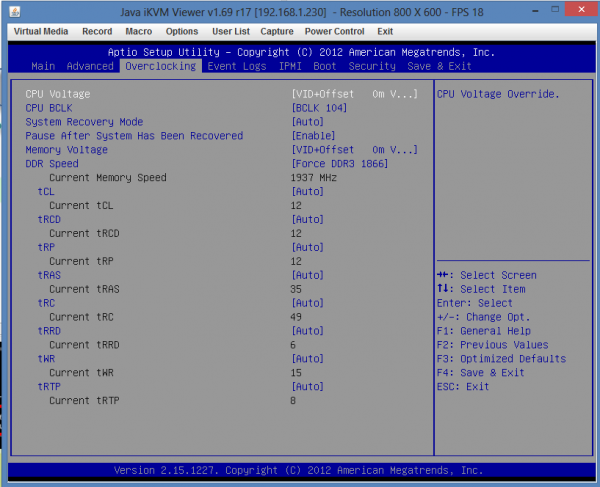
The first option is CPU Voltage. As we can see, the test system was set at 0m Volts offset so despite running over 100MHz faster than stock across 16 physical cores, we are not going to see much higher power consumption. Intel’s 32nm process at stock voltages scales nicely in terms of power consumption when adjusting frequency. Once voltage is added along with frequency adjustments, power consumption rises. We will have power consumption tests to confirm this soon, but suffice to say a 4% CPU performance boost with stock voltages is great.
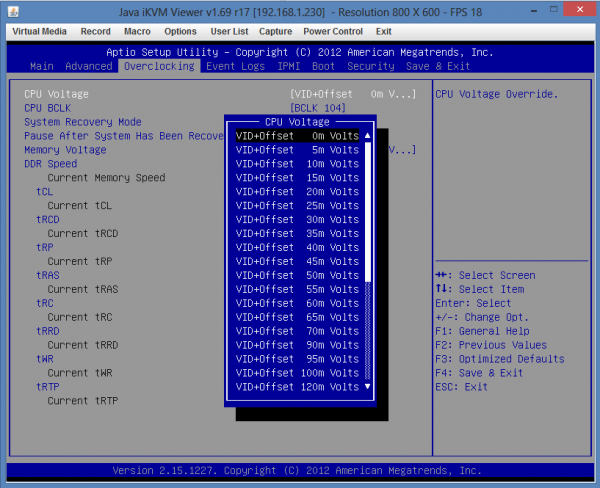
The next option is CPU BCLK. With current generation Intel CPUs we have two options to adjust the CPU frequency. Multiplier adjustments (Intel consumer K series CPUs) and BCLK adjustments. Since Intel Xeon E5-2600 series CPUs do not allow multiplier adjustment, the only option is to adjust BCLK. I have never seen a dual socket system in the lab do a 7% BCLK using normal cooling so this is a reasonable limit. The Supermicro Hyper-Speed line allows 1% adjustments up to BCLK 106. The system was shipped at BCLK 104 as can be seen below. That means that base clocks are up 4% over stock. That turns the Intel Xeon E5-2687W base clock from:
- 31 (multiplier) * 100 (BCLK) = 3.1GHz to
- 31 (multiplier) * 104 (BCLK) = 3.224GHz
That 4% speed up makes it the fastest shipping product for the server and workstation market (unless one can get Supermicro to sell them 105 BCLK or 106 BCLK Hyper-Speed systems.) Intel charges around $2 per 1MHz CPU increment at these performance levels, so gaining 124MHz on two CPUs is worth around $500 given current pricing.
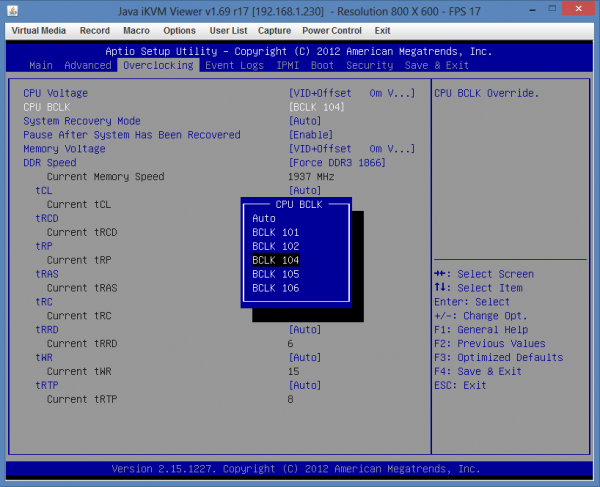
Since Supermicro is mindful that these will deployed in high value applications. In the event that the system does hang, the system’s Watchdog feature will reset the server. One can specify whether they would want the system to reboot in optimized state or using defaults as a fail safe.
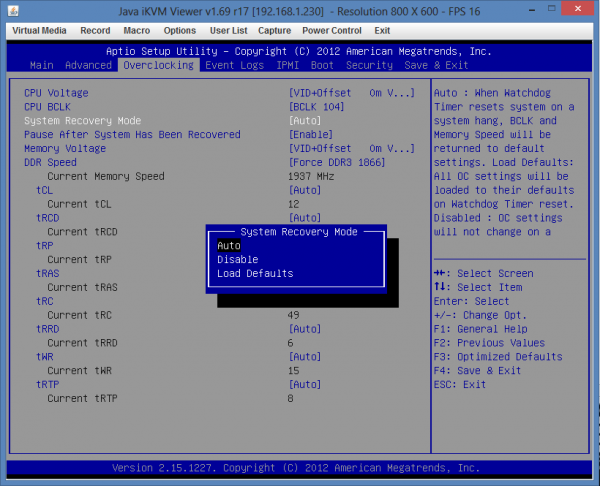
Along with this, Supermicro Hyper-Speed servers can be set to pause after system recovery. This is useful if one would want to make adjustments after the system has been reset.
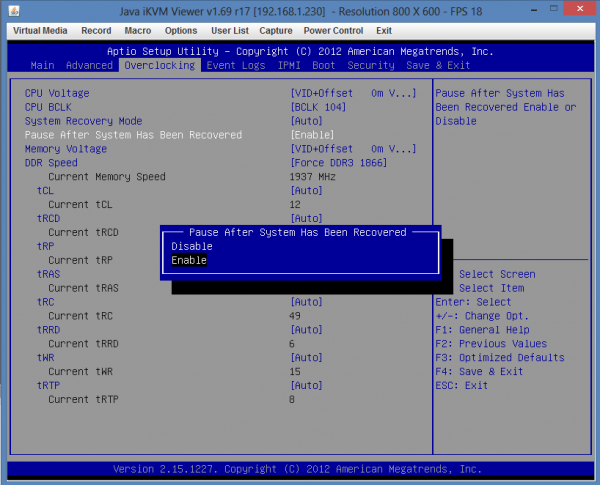
The second part of the Supermicro Hyper-Speed overclocking solution is the memory overclock. As with CPU voltage, memory voltage can be adjusted. In the test server, as with the CPU voltage, the memory voltage was set at +0m Volts despite the memory running 21% faster than stock speeds.
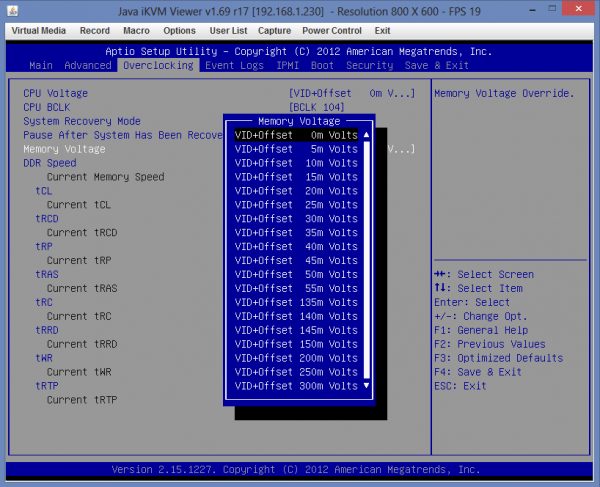
On the memory speed settings one will notice that the Supermicro Hyper-Speed solution can force several DDR3 speeds. The test system is set to force DDR3 1866 memory. This alone is a 14.2% improvement over standard DDR3 1600. As is shown above, the system has a 104MHz BCLK so we take 1866MHz * 1.04 = ~1940. In this case, the memory is running at 1937MHz as can be seen in the picture. This is 337MHz over the 1600MHz base clock speeds. The other settings allow one to manually adjust memory timings at a more granular level. With 64GB of RAM already boosted by 21% at stock voltages, we left these all on Auto settings.

For confirmation, one can see the 31x multiplier and 104MHz BCLK manifest itself in the BIOS. The below picture shows the CPUs running at 3224MHz with features like Hyper-Threading, Intel Virtualization and AES-NI enabled. The big note here is that this is a straight 4% CPU and 21% memory speed up without sacrificing features. This is ideal for when the fastest systems need to be deployed.
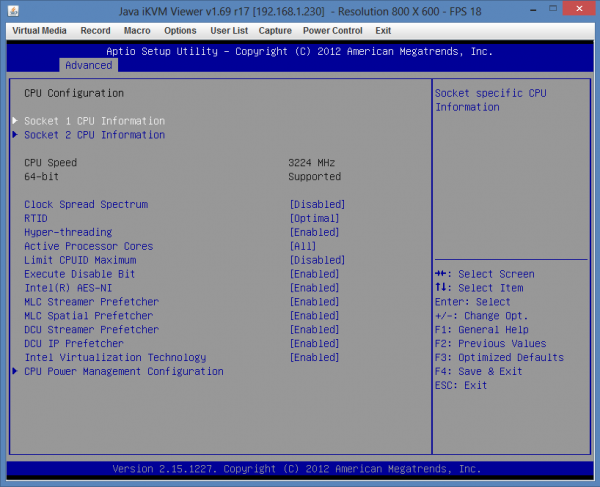
Closing Thoughts
Overall, the Supermicro Hyper-Speed products allow for factory enhanced configurations of Intel’s fastest processors. Here we saw two Intel Xeon E5-2687W processors gain 4% clock speed or 124MHz each. Intel does not currently sell Intel Xeon E5-2600 CPUs that run this fast. Likewise memory runs at 1937MHz or 21% faster than stock. The options in BIOS make sense for systems that will be deployed in data centers. The factory speed up shown here was done without increasing voltages, so power consumption figures even at 100% load do not spike. This is a great solution for those looking for the fastest performance available in a data center.

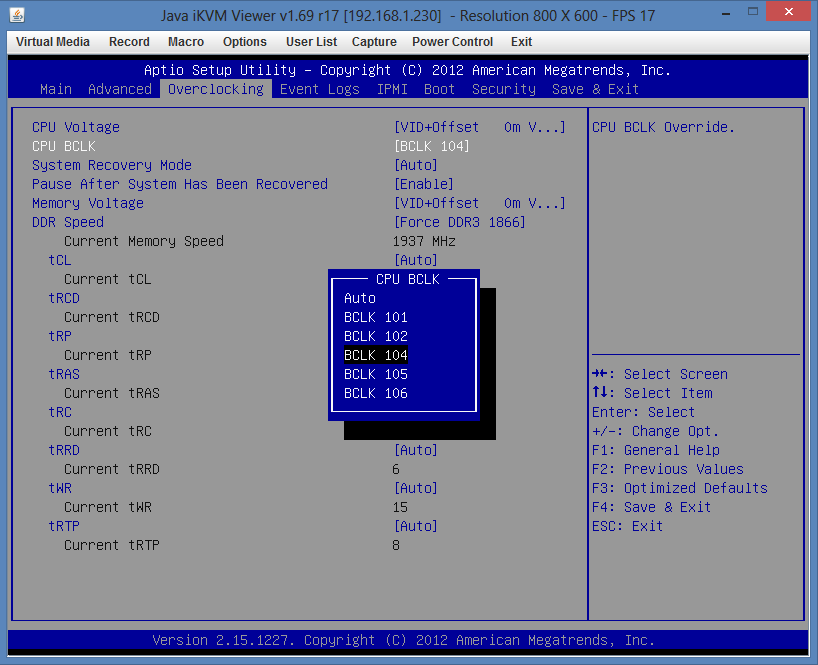



Looks easy enough. Auto = stock speeds right?
Does not adding voltage mean better power consumption?